#drm software for video
Explore tagged Tumblr posts
Text
DRM Video Encryption Software or DRM Player to protect your video content
128-bit DRM Video Encryption software with DRM Player which protects your videos & content from unauthorized access. Start your free trail now - iShieldProtect®. Start your free trail now 916400 6065
#DRM Video Encryption Software#DRM player#drm video protection software#drm player#drm protection software#drm video encryption#drm software for video#drmprotected video testing#drm protected video testing
0 notes
Text
Why Your Business Needs a Cloud Video Platform Today

In the digital era, businesses are constantly looking for ways to enhance efficiency, reduce costs, and improve communication and collaboration. One of the technological advances that has been pivotal in achieving these objectives is the cloud video platform. This platform has revolutionized how businesses operate, offering a multitude of benefits ranging from improved communication strategies to expansive data analytics. Additionally, the cloud video platform provides scalable solutions that adapt to the needs of growing businesses, ensuring that they can maintain seamless operations. By facilitating remote work and virtual meetings, these platforms also contribute to better team collaboration and more efficient project management.
Key Benefits of Using Cloud Video Platform
A cloud video platform offers significant advantages to businesses, paramount among them being scalability, accessibility, enhanced collaboration, cost-effectiveness, and security. Understanding these benefits in detail can help organizations make informed decisions about adopting this technology, leading to more efficient operations, improved communication, and ultimately, a competitive edge in the market. Embracing cloud video solutions is a strategic move.
Scalability and Flexibility
One of the primary advantages of cloud video platform is their scalability. Businesses can effortlessly scale their video management needs up or down based on current demand without the need for significant upfront investments in hardware. This flexibility is crucial in adapting to business growth or changes without incurring additional costs or delays. Moreover, it allows companies to efficiently manage resources and respond promptly to evolving market conditions.
Accessibility and Reach
With a cloud video platform, videos can be accessed from anywhere, at any time, on any device with internet access. This global accessibility ensures that employees in different locations can easily participate in training sessions, meetings, and collaborations without the need for physical travel, further enhancing productivity across the organization. Additionally, it allows for seamless integration of remote and on-site teams, fostering a more connected and efficient workplace.
Enhanced Collaboration
A cloud video platform facilitates enhanced collaboration among teams by providing features such as real-time sharing, editing, and communication tools. These integrated features enable teams to work together more effectively, even when members are spread across various geographic locations. This real-time interaction significantly aids in quicker decision-making and problem-solving, ensuring that projects progress smoothly and efficiently regardless of physical distances.
Cost-Effectiveness
Moving to a cloud video platform can significantly reduce costs related to video content management. By leveraging cloud services, businesses eliminate the need for expensive on-premise infrastructure. Additionally, the maintenance and upgrading of systems are handled by the service provider, which can further decrease IT expenses. Furthermore, cloud platforms offer scalable solutions that allow businesses to pay only for the resources they use, optimizing budget allocation.
Security and Compliance
Security is a top concern for any business leveraging digital tools. The cloud video platform is equipped with robust security measures, including data encryption, secure access controls, and compliance with international standards. These features ensure that sensitive content remains protected against unauthorized access and breaches. Additionally, regular security audits and updates further enhance the platform's ability to safeguard valuable data, providing businesses with peace of mind and confidence in their digital security.
Improved Content Management and Analytics
A cloud video platform also offers advanced content management systems, allowing businesses to efficiently organize, manage, and retrieve video content with ease. Additionally, these platforms provide insightful analytics on viewer engagement, content performance, and other key metrics. This data-driven approach enables businesses to make informed decisions to optimize their video strategies, enhance viewer experience, and ultimately drive better results in their video marketing efforts.
Implementing Cloud Video Platform: Considerations and Best Practices
Implementing a cloud video platform yields significant benefits, but its success hinges on strategic planning and factor consideration. Vital elements encompass selecting an appropriate platform, meeting bandwidth needs, prioritizing user adoption tactics, and upholding data governance policies. These measures collectively shape a robust foundation for seamless integration and optimized performance.
Choosing the Right Platform
Selecting the appropriate cloud video platform is critical and should be based on specific business needs such as feature requirements, scalability, security, and compatibility with existing systems. Businesses should conduct thorough research or consult with experts to find the best fit.
Ensuring Adequate Bandwidth
Effective video streaming requires sufficient bandwidth. Before implementation, businesses need to assess their internet bandwidth to ensure smooth video playback and uploading capabilities without disrupting other business operations.
Focusing on User Adoption
To maximize the benefits of cloud video platform, promoting user adoption through training and support is essential. Employees need to understand how to use the platform efficiently and be comfortable with its features to fully leverage its capabilities.
Adhering to Data Governance
Businesses must also consider data governance when implementing cloud video platform. Ensuring that the platform complies with relevant laws and regulations regarding data privacy and protection is crucial.
Conclusion
The adoption of a cloud video platform can bring transformative benefits to businesses, fostering better communication and collaboration, providing scalability and flexibility, enhancing content management and analytics, reducing costs, and bolstering security. By leveraging cloud technology, organizations can streamline their operations and improve efficiency. Moreover, these platforms enable seamless remote work, support real-time collaboration, and offer advanced tools for data-driven decision-making. With careful planning and consideration of the key factors outlined above, organizations can effectively implement and use these platforms to achieve substantial business success, ensuring they stay competitive in an increasingly digital and connected world. please don’t hesitate to contact us via email or phone for further assistance!
#cloud video platform#secure video hosting#streaming video hosting#encrypted video hosting#drm encrypted video streaming#encrypted video streaming#DRM software#video hosting#security video#video platforms#online video platform#video watermark#DRM protected content#video cdn#wide vine#online courses#e-learning platforms#influencers#paid online courses#E-Learning Solutions#Digital content
0 notes
Text
Three AI insights for hard-charging, future-oriented smartypantses
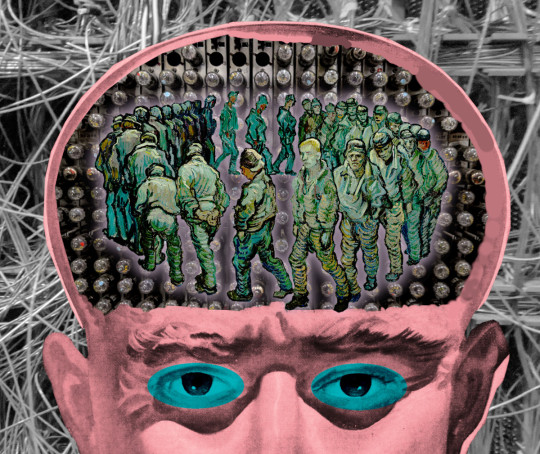
MERE HOURS REMAIN for the Kickstarter for the audiobook for The Bezzle, the sequel to Red Team Blues, narrated by @wilwheaton! You can pre-order the audiobook and ebook, DRM free, as well as the hardcover, signed or unsigned. There’s also bundles with Red Team Blues in ebook, audio or paperback.

Living in the age of AI hype makes demands on all of us to come up with smartypants prognostications about how AI is about to change everything forever, and wow, it's pretty amazing, huh?
AI pitchmen don't make it easy. They like to pile on the cognitive dissonance and demand that we all somehow resolve it. This is a thing cult leaders do, too – tell blatant and obvious lies to their followers. When a cult follower repeats the lie to others, they are demonstrating their loyalty, both to the leader and to themselves.
Over and over, the claims of AI pitchmen turn out to be blatant lies. This has been the case since at least the age of the Mechanical Turk, the 18th chess-playing automaton that was actually just a chess player crammed into the base of an elaborate puppet that was exhibited as an autonomous, intelligent robot.
The most prominent Mechanical Turk huckster is Elon Musk, who habitually, blatantly and repeatedly lies about AI. He's been promising "full self driving" Telsas in "one to two years" for more than a decade. Periodically, he'll "demonstrate" a car that's in full-self driving mode – which then turns out to be canned, recorded demo:
https://www.reuters.com/technology/tesla-video-promoting-self-driving-was-staged-engineer-testifies-2023-01-17/
Musk even trotted an autonomous, humanoid robot on-stage at an investor presentation, failing to mention that this mechanical marvel was just a person in a robot suit:
https://www.siliconrepublic.com/machines/elon-musk-tesla-robot-optimus-ai
Now, Musk has announced that his junk-science neural interface company, Neuralink, has made the leap to implanting neural interface chips in a human brain. As Joan Westenberg writes, the press have repeated this claim as presumptively true, despite its wild implausibility:
https://joanwestenberg.com/blog/elon-musk-lies
Neuralink, after all, is a company notorious for mutilating primates in pursuit of showy, meaningless demos:
https://www.wired.com/story/elon-musk-pcrm-neuralink-monkey-deaths/
I'm perfectly willing to believe that Musk would risk someone else's life to help him with this nonsense, because he doesn't see other people as real and deserving of compassion or empathy. But he's also profoundly lazy and is accustomed to a world that unquestioningly swallows his most outlandish pronouncements, so Occam's Razor dictates that the most likely explanation here is that he just made it up.
The odds that there's a human being beta-testing Musk's neural interface with the only brain they will ever have aren't zero. But I give it the same odds as the Raelians' claim to have cloned a human being:
https://edition.cnn.com/2003/ALLPOLITICS/01/03/cf.opinion.rael/
The human-in-a-robot-suit gambit is everywhere in AI hype. Cruise, GM's disgraced "robot taxi" company, had 1.5 remote operators for every one of the cars on the road. They used AI to replace a single, low-waged driver with 1.5 high-waged, specialized technicians. Truly, it was a marvel.
Globalization is key to maintaining the guy-in-a-robot-suit phenomenon. Globalization gives AI pitchmen access to millions of low-waged workers who can pretend to be software programs, allowing us to pretend to have transcended the capitalism's exploitation trap. This is also a very old pattern – just a couple decades after the Mechanical Turk toured Europe, Thomas Jefferson returned from the continent with the dumbwaiter. Jefferson refined and installed these marvels, announcing to his dinner guests that they allowed him to replace his "servants" (that is, his slaves). Dumbwaiters don't replace slaves, of course – they just keep them out of sight:
https://www.stuartmcmillen.com/blog/behind-the-dumbwaiter/
So much AI turns out to be low-waged people in a call center in the Global South pretending to be robots that Indian techies have a joke about it: "AI stands for 'absent Indian'":
https://pluralistic.net/2024/01/29/pay-no-attention/#to-the-little-man-behind-the-curtain
A reader wrote to me this week. They're a multi-decade veteran of Amazon who had a fascinating tale about the launch of Amazon Go, the "fully automated" Amazon retail outlets that let you wander around, pick up goods and walk out again, while AI-enabled cameras totted up the goods in your basket and charged your card for them.
According to this reader, the AI cameras didn't work any better than Tesla's full-self driving mode, and had to be backstopped by a minimum of three camera operators in an Indian call center, "so that there could be a quorum system for deciding on a customer's activity – three autopilots good, two autopilots bad."
Amazon got a ton of press from the launch of the Amazon Go stores. A lot of it was very favorable, of course: Mister Market is insatiably horny for firing human beings and replacing them with robots, so any announcement that you've got a human-replacing robot is a surefire way to make Line Go Up. But there was also plenty of critical press about this – pieces that took Amazon to task for replacing human beings with robots.
What was missing from the criticism? Articles that said that Amazon was probably lying about its robots, that it had replaced low-waged clerks in the USA with even-lower-waged camera-jockeys in India.
Which is a shame, because that criticism would have hit Amazon where it hurts, right there in the ole Line Go Up. Amazon's stock price boost off the back of the Amazon Go announcements represented the market's bet that Amazon would evert out of cyberspace and fill all of our physical retail corridors with monopolistic robot stores, moated with IP that prevented other retailers from similarly slashing their wage bills. That unbridgeable moat would guarantee Amazon generations of monopoly rents, which it would share with any shareholders who piled into the stock at that moment.
See the difference? Criticize Amazon for its devastatingly effective automation and you help Amazon sell stock to suckers, which makes Amazon executives richer. Criticize Amazon for lying about its automation, and you clobber the personal net worth of the executives who spun up this lie, because their portfolios are full of Amazon stock:
https://sts-news.medium.com/youre-doing-it-wrong-notes-on-criticism-and-technology-hype-18b08b4307e5
Amazon Go didn't go. The hundreds of Amazon Go stores we were promised never materialized. There's an embarrassing rump of 25 of these things still around, which will doubtless be quietly shuttered in the years to come. But Amazon Go wasn't a failure. It allowed its architects to pocket massive capital gains on the way to building generational wealth and establishing a new permanent aristocracy of habitual bullshitters dressed up as high-tech wizards.
"Wizard" is the right word for it. The high-tech sector pretends to be science fiction, but it's usually fantasy. For a generation, America's largest tech firms peddled the dream of imminently establishing colonies on distant worlds or even traveling to other solar systems, something that is still so far in our future that it might well never come to pass:
https://pluralistic.net/2024/01/09/astrobezzle/#send-robots-instead
During the Space Age, we got the same kind of performative bullshit. On The Well David Gans mentioned hearing a promo on SiriusXM for a radio show with "the first AI co-host." To this, Craig L Maudlin replied, "Reminds me of fins on automobiles."
Yup, that's exactly it. An AI radio co-host is to artificial intelligence as a Cadillac Eldorado Biaritz tail-fin is to interstellar rocketry.


Back the Kickstarter for the audiobook of The Bezzle here!

If you’d like an essay-formatted version of this post to read or share, here’s a link to it on pluralistic.net, my surveillance-free, ad-free, tracker-free blog:
https://pluralistic.net/2024/01/31/neural-interface-beta-tester/#tailfins
#pluralistic#elon musk#neuralink#potemkin ai#neural interface beta-tester#full self driving#mechanical turks#ai#amazon#amazon go#clm#joan westenberg
1K notes
·
View notes
Text
One thing that I keep seeing whenever I make posts that are critical of macs is folks in the notes going "they make great computers for the money if you just buy used/refurbs - everyone knows not to buy new" and A) no they don't know that, most people go looking for a new computer unless they have already exhausted the new options in their budget and B) no they don't make great computers for the money, and being used doesn't do anything to make them easier to work on or repair or upgrade.
Here's a breakdown of the anti-consumer, anti-repair features recently introduced in macbooks. If you don't want to watch the video, here's how it's summed up:
In the end the Macbook Pro is a laptop with a soldered-on SSD and RAM, a battery secured with glue, not screws, a keyboard held in with rivets, a display and lid angle sensor no third party can replace without apple. But it has modular ports so I guess that’s something. But I don’t think it’s worthy of IFixIt’s four out of ten reparability score because if it breaks you have to face apple’s repair cost; with no repair competition they can charge whatever they like. You either front the cost, or toss the laptop, leaving me wondering “who really owns this computer?”
Apple doesn't make great computers for the money because they are doing everything possible to make sure that you don't actually own your computer, you just lease the hardware from apple and they determine how long it is allowed to function.
The lid angle sensor discussed in this video replaces a much simpler sensor that has been used in laptops for twenty years AND calibrating the sensor after a repair requires access to proprietary apple software that isn't accessible to either users or third party repair shops. There's no reason for this software not to be included as a diagnostic tool on your computer except that Apple doesn't want users working on apple computers. If your screen breaks, or if the fragile cable that is part of the sensor wears down, your only option to fix this computer is to pay apple.
How long does apple plan to support this hardware? What if you pay $3k for a computer today and it breaks in 7 years - will they still calibrate the replacement screen for you or will they tell you it's time for new hardware EVEN THOUGH YOU COULD HAVE ATTAINED FUNCTIONAL HARDWARE THAT WILL WORK IF APPLE'S SOFTWARE TELLS IT TO?
Look at this article talking about "how long" apple supports various types of hardware. It coos over the fact that a 2013 MacBook Air could be getting updates to this day. That's the longest example in this article, and that's *hardware* support, not the life cycle of the operating system. That is dogshit. That is straight-up dogshit.
Apple computers are DRM locked in a way that windows machines only wish they could pull off, and the apple-only chips are a part of that. They want an entirely walled garden so they can entirely control your interactions with the computer that they own and you're just renting.
Even if they made the best hardware in the world that would last a thousand years and gave you flowers on your birthday it wouldn't matter because modern apple computers don't ever actually belong to apple customers, at the end of the day they belong to apple, and that's on purpose.
This is hardware as a service. This is John Deere. This is subscription access to the things you buy, and if it isn't exactly that right at this moment, that is where things have been heading ever since they realized it was possible to exert a control that granular over their users.
With all sympathy to people who are forced to use them, Fuck Apple I Hope That They Fall Into The Ocean And Are Hidden Away From The Honest Light Of The Sun For Their Crimes.
2K notes
·
View notes
Text
The Death of Physical Media
I keep seeing this concern around all of my home theater circles. Ever since Best Buy decided to abandon physical media there has been a call to arms to save it.
Chris Stuckman did a great video on his love of physical media.
youtube
I admire and share his passion.
That said, I think there is nothing to stop physical media from being scaled back. At best, it will end up like vinyl and only a few select titles will still be pressed.
Which is why I think saving physical media is the wrong fight.
There is a much larger fight that encompasses more than just blu-ray discs...
(I'm going to use really big letters for dramatic effect so don't get startled.)
DATA OWNERSHIP!
(Imagine a long trailing echo when reading that in your mind.)
(Sorry, I probably should have included those instructions in the previous parenthetical. So go back and read "data ownership" again with the proper gusto.)
(Did you do it?)
(Was it cool?)
(Cool.)
A blu-ray is just data.
The disc does not positively affect the visuals or the sounds. It's just 1s and 0s coded into microscopic pits. You can put that data on a hard drive. You can put it on an SD Card. You can put it on a thumb drive and wear it on a necklace.
You can even use WinRAR to break it up into little 1.44 megabyte chunks and save it to floppy disks.

Another 40 more cases of floppies and you've got Avatar preserved for life!
The medium is not important.
The *data* is important.
And as everything turns into a subscription we are losing out on ways to own data. Beyond that, people aren't yet seeing the value of owning data. If renting a digital download is cheaper, they are almost always going to choose that option.
So the fight is two-fold.
We need to fight for the right to parrrrrty own data.
We need to convince the populace of the value of owning data.
This can apply to software, movies, video games. Hell, I don't even own my damn doorbell videos. There is no way to download all of the footage. I'd have to do each video one at a time. And if I don't keep my subscription, I will no longer have access to that data as it will soon be deleted.
We would need a platform similar to Steam—though it isn't the perfect data ownership solution. Many titles require internet connectivity and DRM verification. What happens to our media when a company goes out of business and the infrastructure to verify the DRM over the internet is gone?
So that would need to be addressed. Perhaps a new form of DRM linked to our digital identity that can be verified locally.
I mean, I'd love to get rid of DRM, but that is probably not realistic.
I think the best avenue is probably a congressional law.
"The Own Your Own Data Act"
TOYODA?
We can workshop the name later.
In conclusion, we don't need to save blu-rays. We need the option to buy data and actually own it in perpetuity.
Meaning if a streaming service deletes a movie or a movie studio goes belly up, our data doesn't disintegrate along with it. We cannot let our favorite shows go extinct. We need to be part of preserving that history. Not to mention discs have a shelf life. But data can be transferred to new mediums indefinitely.
My house is just going to be wall to wall floppy disks.
157 notes
·
View notes
Text
If you do not keep a finger on the pulse with recent video game releases you might have heard about its recent performance issues.
With more AAA games pricing themselves at $70 there’s this weird inverse chart of game price to quality. Games are often shipped with the intent to make sales now and patch it in later, but also some anti piracy digital rights management software (DRM) actively worsens performance beyond current issues, DRM often run during the initial release of the game and nowhere else.
So more often than not, the initial release of a AAA game is when it runs the worst but costs the most, and games stop being expensive post hype. They need you to have played it for their sequel so they’re either free or hugely discounted. This is also post patch and when they’re working at their best, so they’re cheaper and better performance wise.
Don’t pre order, don’t buy day one. Don’t succumb to hype. Hype is often artificial and decays quickly.
684 notes
·
View notes
Text
In just a few weeks, Nintendo 3DS and Wii U owners will finally completely lose the ability to purchase new digital games on those aging platforms. The move will cut off consumer access to hundreds of titles that can't legally be accessed any other way.
But while that's a significant annoyance for consumers holding onto their old hardware, current rules mean it could cause much more of a crisis for the historians and archivists trying to preserve access to those game libraries for future generations.
"While it's unfortunate that people won't be able to purchase digital 3DS or Wii U games anymore, we understand the business reality that went into this decision," the Video Game History Foundation (VGHF) tweeted when the eShop shutdowns were announced a year ago. "What we don't understand is what path Nintendo expects its fans to take, should they wish to play these games in the future."
Libraries and organizations like the VGHF say their game preservation efforts are currently being hampered by the Digital Millennium Copyright Act (DMCA), which generally prevents people from making copies of any DRM-protected digital work.
The US Copyright Office has issued exemptions to those rules to allow libraries and research institutions to make digital copies for archival purposes. Those organizations can even distribute archived digital copies of items like ebooks, DVDs, and even generic computer software to researchers through online access systems.
But those remote-access exemptions explicitly leave out video games. That means researchers who want to access archived game collections have to travel to the physical location where that archive resides—even if the archived games themselves were never distributed on physical media.
475 notes
·
View notes
Text
You really don't need to burn CDs if you want to air quotes own your digital music files. Afaik even iTunes or whatever doesn't enforce any kind of drm besides counting which computers you can download songs from them on, and ofc bandcamp or pirated music doesn't care at all.
My android phone has never spoken to iTunes and has my whole library on it, I have a big external drive with music that I pass between computers as needed and never had any issues, I can use all of them in video or audio editing software directly without doing aux cord tricks
You just have to actually download the files onto a device instead of streaming everything forever is the thing. If you want CDs because they look nice or because you have a car that has a CD drive but no Bluetooth or place to charge your phone (can't you use a lighter adapter?) or you want to send someone a mixtape or whatever, knock yourself out, but otherwise files are good enough
#and if you do listen to all your music over streaming and want your own copies#it'll be less of a hassle to just pirate what you want than to do aux cord shenanigans#I feel like I gotta be missing something in this conversation because otherwise this is not a problem that exists
86 notes
·
View notes
Text
LOST MEDIA: Gorillaz - Plastic Beach Web Games
I come to you tonight with one request: I want help in tracking down the Plastic Beach point-and-click adventure game from the Phase 3 (2010-2012) Gorillaz website.
In 2010, coinciding with the release of their third studio album, British virtual band Gorillaz gave their website a huge overhaul, including the release of several new flash games. The centerpiece was a point-and-click adventure game (untitled, usually just referred to as "Plastic Beach") in which the player was able to explore the island of Plastic Beach, similar to the games available on earlier websites where the player was able to explore Gorillaz HQ Kong Studios.
Along with this game were a few others: Escape to Plastic Beach, a three chapter long action/adventure game (the third chapter of which cost €1.50 to play, and was available both for PC and iPhones.) Just recently the developer, Matmi, hinted at trying to re-release these, but they went silent regarding it and nothing has come of it so far.
There were also two smaller Flash titles, Submatronic and Gorillaz Fishing. Not entirely sure what these two entailed but they were listed on the website and, like the adventure game and Escape are not playable via the Wayback Machine nor are they archived elsewhere.
From my research, it seems the website had some kind of DRM software that the older websites (which have been archived over at zombiehiphop.xyz) didn't, since the Plastic Beach game used full tracks from the album and EMI was worried about piracy. Before anyone suggests it like was done in other places where I've asked about this, no, the game was not released on a CD or DVD. Because of this, all four games unique to the Plastic Beach era website are lost. The iPhone port of Escape to Plastic Beach was also removed from the App Store years ago, and as such is also completely lost.
As of right now, all that still exists are low-quality videos of the adventure game in action, a few screenshots, and a handful of Flash files I've dug up from the Wayback Machine.
The loss of this game represents not just a loss for Flash preservation, but a huge loss for Gorillaz fans as it was an integral element of the story of the Plastic Beach era. Without it and much of the other content from the old website, the already incomplete story that Jamie Hewlett and the rest of the Zombie Flesh Eaters team were trying to tell lives on almost wholly through secondary accounts. While recordings exist, it is simply not the same as having access to the full experience.
I ask of you all to please consider my words and help me do something about this, instead of wallowing in hopelessness as it seems the community has been doing for oh so long now.
Thank You.
Footage of the adventure game: https://www.youtube.com/watch?v=jUnvkZFPu1Q https://www.youtube.com/watch?v=pmAo_POMRHY https://www.youtube.com/watch?v=DW6KHLLgBss https://www.youtube.com/watch?v=IWIkwVDIJNQ
The handful of Flash files I dug up via the Wayback Machine: https://drive.google.com/drive/folders/1RKpP9o-j-4jFkdQEDN54ye5LGZIrBd_7
#lost media#gorillaz#partially lost media#plastic beach#flashpoint#old internet#internet media#flash games#mysteries#nostalgia#gorillaz phase 3#murdoc niccals#stuart 2d pot#russel hobbs#damon albarn#jamie hewlett#zombie flesh eaters#archival#media preservation#video games#lost games#internet mysteries
142 notes
·
View notes
Text
PSA: Free Software
Reading this may really save your time, privacy, and money! Reblog or share to spread awareness!
Folks often use software that’s expensive and sometimes even inferior because they don’t know there are alternatives. So to those unfamiliar: basically, free and open-source (FOSS) or "libre" software is free to use and anyone can access the original code to make their own version or work on fixing problems.
That does not mean anyone can randomly add a virus and give it to everyone—any respectable libre project has checks in place to make sure changes to the official version are good! Libre software is typically developed by communities who really care about the quality of the software as a goal in itself.
There are libre alternatives to many well-known programs that do everything an average user needs (find out more under the cut!) for free with no DRM, license keys, or subscriptions.
Using libre software when possible is an easy way to fight against and free yourself from corporate greed while actually being more convenient in many cases! If you need an app to do something, perhaps try searching online for things like:
foss [whatever it is]
libre [whatever it is]
open source [whatever it is]
Feel free to recommend more libre software in the tags, replies, comments, or whatever you freaks like to do!
Some Libre Software I Personally Enjoy…
LibreOffice
LibreOffice is an office suite, much like Microsoft Office. It includes equivalents for apps like Word, Excel, and Powerpoint, which can view and edit files created for those apps.

I can't say I've used it much myself yet. I do not personally like using office software except when I have to for school.
OpenShot
OpenShot Video Editor is, as the name suggests, a video editing program. It has industry-standard features like splicing, layering, transitions, and greenscreen.
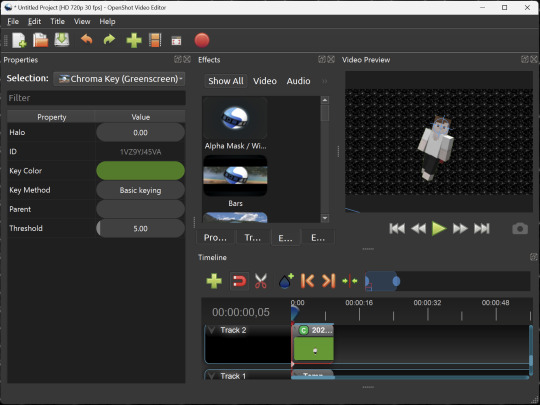
I've only made one video with it so far, but I'm already very happy with it. I had already paid for a video editor (Cyberlink PowerDirector Pro), but I needed to reinstall it and I didn't remember how. Out of desperation, I searched up "FOSS video editor" and I'm so glad I did. There's no launcher, there's no promotion of other apps and asset packs—it's just a video editor with a normal installer.
GIMP
GNU Image Manipulation Program is an image editor, much like Photoshop. Originally created for Linux but also available for Windows and MacOS, it provides plenty of functionality for editing images. It is a bit unintuitive to learn at first, though.

I've used it to create and modify images for years, including logos, really bad traceover art, and Minecraft textures. It doesn't have certain advanced tech like AI paint-in, but it has served my purposes well and it might just work for yours!
(Be sure to go to Windows > Dockable Dialogs > Colors. I have no idea why that's not enabled by default.)
Audacity
Audacity is an audio editing program. It can record, load, splice, and layer audio files and apply effects to them.

Audacity is another program I've used for a long time. It is not designed to compose music, but it is great for podcasts, simple edits, and loading legacy MS Paint to hear cool noises.
7-Zip
7-Zip is a file manager and archive tool. It supports many archive types including ZIP, RAR, TAR, and its own format, 7Z. It can view and modify the contents of archives, encrypt and decrypt archives, and all that good stuff.

Personally, I use 7-Zip to look inside JAR files for Minecraft reasons. I must admit that its UI is ugly.
Firefox
Firefox is an internet browser, much like Google Chrome, Microsoft Edge, or Safari. While browsers are free, many of them include tracking or other anti-consumer practices. For example, Google plans to release an update to Chromium (the base that most browsers are built from these days) that makes ad blockers less effective by removing the APIs they currently rely on.
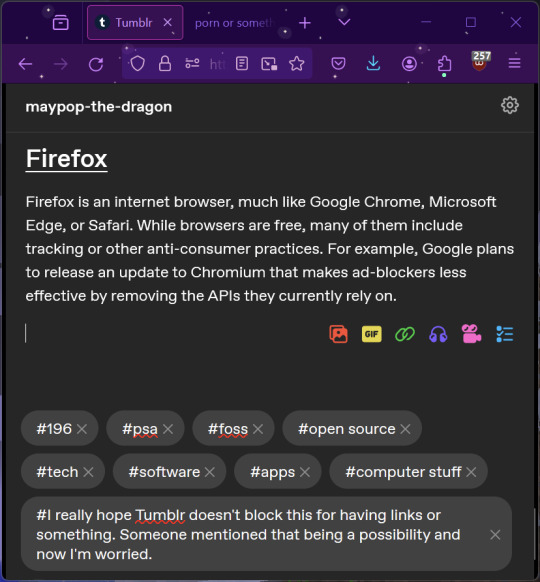
Aside from fighting monopolies, benefits include: support for animated themes (the one in the picture is Purple Night Theme), good ad blockers forever, an (albeit hidden) compact UI option (available on about:config), and a cute fox icon.
uBlock Origin
As far as I know, uBlock Origin is one of the best ad blockers there is.
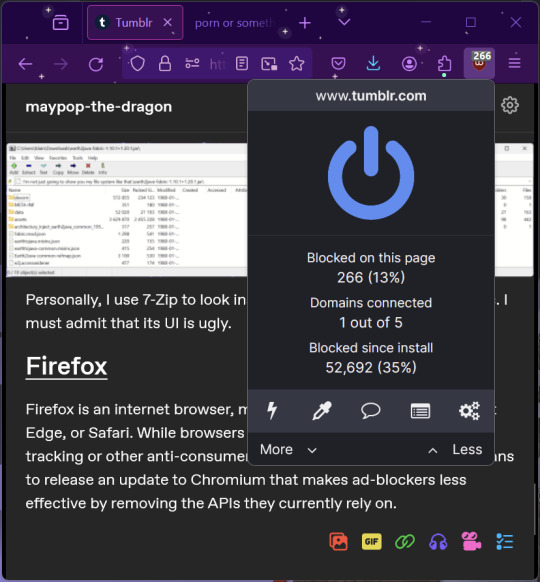
I was on a sketchy website with my brother, and he was using Opera GX's ad blocker. Much of the time when he clicked on anything, it would take us to a random sponsored page. I suggested that he try uBlock Origin, and with uBlock Origin, that didn't happen anymore.
Linux
Linux is a kernel, but the term is often used to refer to operating systems (much like Windows or MacOS) built on it. There are many different Linux-based operating systems (or "distros") to choose from, but apps made for Linux usually work on most popular distros. You can also use many normally Windows-only apps on Linux through compatibility layers like WINE.


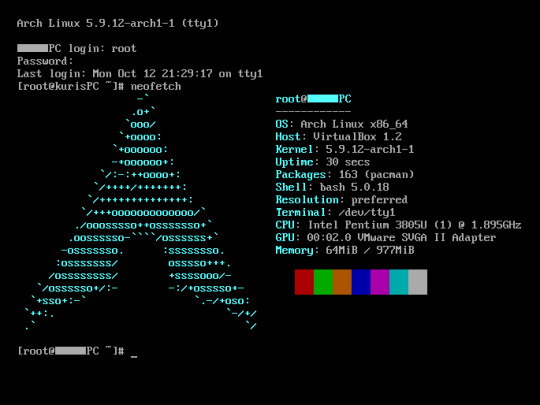
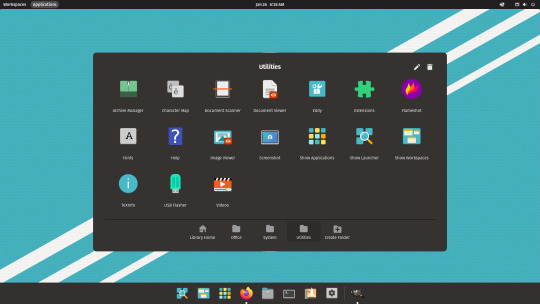
I don't have all four of these, so the images are from Wikipedia. I tried to show a variety of Linux distros made for different kinds of users.
If you want to replace your operating system, I recommend being very careful because you can end up breaking things. Many computer manufacturers don't care about supporting Linux, meaning that things may not work (Nvidia graphic cards notoriously have issues on Linux, for example).
Personally, I tried installing Pop!_OS on a laptop, and the sound output mysteriously doesn't work. I may try switching to Arch Linux, since it is extremely customizable and I might be able to experiment until I find a configuration where the audio works.
Many Linux distros offer "Live USB" functionality, which works as both a demo and an installer. You should thoroughly test your distro on a Live USB session before you actually install it to be absolutely sure that everything works. Even if it seems fine, you should probably look into dual-booting with your existing operating system, just in case you need it for some reason.
Happy computering!
#196#psa#foss#open source#tech#software#apps#computer stuff#I really hope Tumblr doesn't block this for having links or something. Someone mentioned that being a possibility and now I'm worried.#please reblog#2024-01-26
44 notes
·
View notes
Text
Own Your Life - Books
In the spirit of gift giving and because @dalleyan made me think about it today, here's a list of articles and websites that may be of interest to those who like to read digital media, and do NOT like when the digital media that they paid for simply vanishes. (The future the tech companies want is 'everything is a subscription, and if you don't pay, you lose everything you ever had or did on this system'):
Anyway. I just thought this was interesting.
#digital media#books#ebooks#epubor#calibre#deDRM#noDRM#kindle#THERE IS NO CLOUD#ITS JUST SOMEONE ELSE'S COMPUTER#happy holidays
35 notes
·
View notes
Text
DRM Video Encryption Software or DRM Player to protect your video content
DRM video encryption software - Digital Rights Management (DRM) is a process that secures digital content such as video to prevent unauthorized use and piracy of copyrighted material. Accessing the content requires authentication of both the user and the period of time requested.
Our iShieldProtect® content security solutions provide security to your digital content to avoid piracy and illegal usage.
iShieldProtect® offers 128-bit DRM video encryption software with DRM Player which protects your videos and content from unauthorized access.
Dissuading from Camera recording - Dynamic watermarks are displayed at different parts of video at random intervals with different information like Name, User ID, IP Address to dissuade students from camera capture.
Tamper proof license Based Security - License key will work only on a single machine identified on the basis of multiple parameters to ensure its uniqueness so that same license can never ever be used on 2 machines installed using cloning software.
Start your free trial now 9164006065
#DRM Video Encryption Software#DRM player#drm video protection software#drm player#drm protection software#drm video encryption#drm software for video#drmprotected video testing#drm protected video testing
0 notes
Text
Mastering Streaming Video Hosting for Beginners

Streaming Video Hosting has become a staple of media consumption, with platforms like YouTube, Netflix, and Twitch pushing the boundaries of how and where we watch videos. However, creating a smooth streaming experience requires meticulous attention to various technical and strategic factors. For content creators and streaming services, optimizing video content is crucial for reducing buffering, improving quality, and ensuring user satisfaction. This article explores the key strategies and technologies involved in optimizing video content for seamless streaming.
Understanding the Basics of Streaming Video Hosting
Streaming Video Hosting is the process of transmitting video files from a server to a user's device in real time. The user’s device decodes the data stream and plays the video without fully downloading it. To achieve seamless streaming, videos must be optimized in several ways, starting with compression and formatting.
Video Compression and Codecs
Video compression is essential to reduce the file size without significantly compromising video quality. Effective compression techniques make videos easier to transmit over various internet speeds. Codecs, which stand for "compressor-decompressor", are used to encode and decode digital video. Popular codecs include H.264, HEVC (H.265), and VP9. Each codec varies in terms of compression efficiency and compatibility with devices and browsers.
Adaptive Bitrate Streaming (ABS)
Adaptive Bitrate Streaming is a technique used to adjust the video quality in real time based on the viewer’s available bandwidth. ABS enhances the viewing experience by minimizing buffering and avoiding the degradation of video quality. Major streaming platforms utilize ABS to dynamically serve the best possible video quality at any given time.
Content Delivery Networks (CDNs)
Content Delivery Networks are another crucial element in optimizing video streaming. CDNs distribute the video content across various servers located in different geographical locations. When a user requests a video, it is served from the nearest server, which reduces latency, decreases buffering times, and improves load speeds.
Best Practices for Video Optimization
Beyond technical adjustments, several best practices can enhance the streaming video hosting experience:
Choose the Right Hosting Solution: Whether it’s a dedicated server, cloud hosting, or a CDN, selecting the right hosting solution based on the audience size and geographical spread is vital.
Opt for Multi-Bitrate Encoding: Offering multiple bitrate options allows the streaming video hosting service to adjust to different internet speeds and device capabilities.
Thoroughly Test Video Quality: Regular testing across different devices and network conditions is essential to ensure consistent video quality and functionality.
Monitor Analytics: Utilize analytics to understand viewer behavior, device usage, and network conditions to continuously refine streaming video hosting strategies.
Optimizing Mobile Streaming
With increasing mobile device usage, optimizing videos for mobile streaming video hosting is crucial. This includes ensuring that videos are encoded in mobile-friendly formats, using responsive design principles, and implementing touch-friendly player controls. Furthermore, considering the use of lighter mobile-specific codecs like VP9 can help in faster loading times and lower data consumption.
Enhancing User Experience (UX)
To ensure a seamless streaming video hosting experience, UX designers and developers should focus on creating an intuitive and engaging interface. Elements such as easy navigation, quick access to video controls, and minimal buffering contribute significantly to user satisfaction. Additionally, including features like video previews, quality selectors, and seamless transitions from one video to another can greatly enhance the viewing experience.
Facing Challenges in Streaming Video Hosting
Content creators and streaming video hosting services often face several challenges such as high bandwidth costs, varied internet speeds among users, and the need for massive scalability during peak times. To address these issues, implementing advanced compression technologies, using efficient transmission protocols, and scaling infrastructure dynamically are vital strategies.
Future Trends in Video Streaming
Looking ahead, emerging technologies such as AI-driven compression, edge computing, and 5G are set to revolutionize the streaming video hosting industry. AI can optimize encoding settings in real time for optimal quality and minimal bandwidth usage. Edge computing will help in processing data closer to the end user, reducing latency significantly. Additionally, the rollout of 5G technology promises substantially higher speeds and more reliable connections, which will further enhance streaming video hosting capabilities.
In conclusion, optimizing video content for seamless streaming video hosting involves a well-rounded approach that includes technical optimizations, strategic planning, and continual adaptation to emerging trends and technologies. By focusing on these aspects, content creators and streaming video hosting platforms can ensure high-quality, buffer-free experiences that meet the evolving demands of modern viewers. please don’t hesitate to contact us via email or phone for further assistance!
#streaming video hosting#cloud video platform#secure video hosting#drm encrypted video streaming#security video#drm software#online video platform
0 notes
Text
This day in history
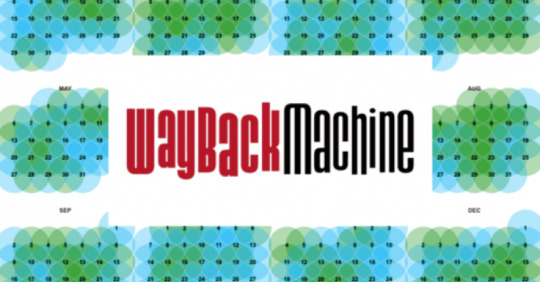
On OCTOBER 23 at 7PM, I'll be in DECATUR, presenting my novel THE BEZZLE at EAGLE EYE BOOKS.

#20yrsago HOWTO break Google Print DRM https://web.archive.org/web/20041011120549/http://vitanuova.loyalty.org/weblog/nb.cgi/view/vitanuova/2004/10/07/2
#15yrsago Japanese court overturns Winny ruling, says file-sharing software is legal even if used for infringement https://web.archive.org/web/20091009232138/http://mdn.mainichi.jp/mdnnews/national/news/20091008p2a00m0na016000c.html
#15yrsago Robert E Howard collection, HEROES IN THE WIND: revisit your heroic past https://memex.craphound.com/2009/10/08/robert-e-howard-collection-heroes-in-the-wind-revisit-your-heroic-past/
#10yrsago Sore losers: How casinos went after two guys who found a video poker bug https://www.wired.com/2014/10/cheating-video-poker/
#10yrsago Fixing the unfixable USB bug https://www.wired.com/2014/10/unpatchable-usb-malware-now-patchsort/
#10yrsago 20 meaningful things you can do about climate change http://thischangeseverything.org/twenty-things-you-can-do-to-address-the-climate-crisis/
#10yrsago 10% of Americans have 10 or more alcoholic drinks every day https://www.washingtonpost.com/news/wonk/wp/2014/09/25/think-you-drink-a-lot-this-chart-will-tell-you/
#10yrsago $35 Firefox OS smartphone – back to the drawing board https://arstechnica.com/gadgets/2014/10/testing-a-35-firefox-os-phone-how-bad-could-it-be/
#5yrsago For the first time ever, taxes on the 400 richest Americans were lower than taxes on everyone else https://www.nytimes.com/interactive/2019/10/06/opinion/income-tax-rate-wealthy.html
#5yrsago Supreme Court greenlights lawsuit over Amazon’s wage-theft from warehouse workers https://www.reuters.com/article/us-usa-court-amazon-com/u-s-supreme-court-rejects-amazon-warehouse-worker-wage-appeal-idUSKBN1WM1FI/
#5yrsago Bernie Blindness: a subreddit for noting the way press narratives ignore or smear Bernie Sanders https://www.reddit.com/r/bernieblindness/top/
#5yrsago Checkm8: an “unstoppable” Iphone jailbreaking crack https://arstechnica.com/information-technology/2019/09/developer-of-checkm8-explains-why-idevice-jailbreak-exploit-is-a-game-changer/
#5yrsago After an injunction against Pacifica radio, New York’s WBAI is back on the air https://twitter.com/2600/status/1181423565389942786
#5yrsago How the “Varsity Blues” admissions scam punished deserving, hard working kids so that mediocre kids of the super-rich could prosper https://memex.craphound.com/2019/10/08/how-the-varsity-blues-admissions-scam-punished-deserving-hard-working-kids-so-that-mediocre-kids-of-the-super-rich-could-prosper/
#5yrsago Facebook’s 2016 election billboards: Buy all your elections with us! https://twitter.com/MarietjeSchaake/status/1180166896294887424
#5yrsago Podcast: Why do people believe the Earth is flat? https://ia601006.us.archive.org/35/items/Cory_Doctorow_Podcast_311/Cory_Doctorow_Podcast_311_-_Why_do_people_believe_the_Earth_is_flat.mp3
#5yrsago The cloud vs humanity: Adobe terminates every software license in Venezuela, keeps Venezuelans’ money https://helpx.adobe.com/la/x-productkb/policy-pricing/executive-order-venezuela.html

Tor Books as just published two new, free LITTLE BROTHER stories: VIGILANT, about creepy surveillance in distance education; and SPILL, about oil pipelines and indigenous landback.

10 notes
·
View notes
Text
happy birthday to flower(vocaloid 3) and fuiro(vocaloid 6) !!!!!!!!! [may 9]

flower

fuiro
flower is a japanese synth developed by YAMAHA in collaboration with Gynoid co for vocaloid, the later liscenced out to INCS Toenter Co., Ltd. and Techno-Speech for her cevio ai version . her v3 illustration was drawn by Yamako, and her v4 and gynoid talk by △○□×/miwasiba, her character design was done by Rocoru. her v4 design was based off of "shota" fanart of flower drawn by miwasiba i guess ??? (???????), her cevio was illustratited and designed by Oguchi. rocoru and yamako are both part of honeyworks ("a circle consisting mainly of the composers Gom and shito, and the illustrator Yamako, along with many support members"*). her design inspired that of the meika twins.
she was initially released in 2014 just for download, then got a physical release on 16 july 2014. she later got a v4 bank on 16 july 2015. her addition to gyndoid talk was announced on 26 july 2019, on twitter her design was released on 11 feb 2020, and the bank itself was released on 3 apr 2020. she is also has a vocaloid neo release which came out on the same day as her initial v3. after great delay, her cevio bank released on 10 mar 2023. she was initially supposed to get here cevio bank in autumn to winter of 2022, then around new years, then it released in march. she also has a vocaloid mobile editor bank, called "v for flower".
"flower" is the name of the character mascot, while "vflower" and "ciflower" are the names of the software itself. in vocaloid, she was said to have an androgynous voice which is designed to specialise in rock music. her voice provider has never been revealed and she has no canon age.
due to the general lack of androgyny (and purple), as well as the move towards the design and voice of a more generic anime girl, ciflower was negatively received by a large number of fans.
Chinozo's song "Goodbye Declaration" featuring flower surpassed 100 million views on youtube in july 2021, making it the most viewed song in vocaloid history and the most viewed song sung by a vocal synth in history.
the honeyworks song called "inokori sensei"/ "detained teacher" (with Gom doing music and lyrics, Oji guitar, Rocuro the illustration, Yamako the illustration, video, and encoding, and drm the bass) released on 17 apr 2014. this song features flower and was used as a debut demo for her. at this time the character rights for flower belonged to gynoid co, despite the company not being fully established until aug 2014.
fuiro is an ai bank who released on 9 may 2023 (today). they themself are designed by ORIHARA, but their logo is designed by iga_kitty. their vp is philo, who is the winner of a contest which was held on nana (?) (a music sharing platform (?)) in 2022
*straight from vocaloid fandom wiki (edited)
#vocal synth#vocal synthesizers#vocal synths#vocalsynths#vocalsynth#VOCALOID#vocaloid birthday#vflower#flower vocaloid#v4 flower#v3 flower#ci flower#cevio#cevio ai#vocaloid 3#vocaloid 4#vocaloid neo#mobile vocaloid editor#vocaloid 6#fuiro#fuiro vocaloid#bday#may 9#vocaloid flower#vocaloid fuiro#may
33 notes
·
View notes
Text
Do you like games? Do you play games which publishers increasingly insist must be online to work, from actual online multiplayer games to those weird social media features in the Sims 3?
This is a global campaign to prevent companies shutting down games and stopping anyone playing them, like Blizzard did with Overwatch shortly before releasing Overwatch 2 (that'll be another $70, thanks!). Unlike Unreal Tournament, which is probably older than I am and you can still set up a local server to play on.
In many places there isn't much you can do if you don't own The Crew as this is based around the shut down of that game, but definitely check if there is a government petition you can sign.
Here is the same information in video form
youtube
Worst case, nothing happens. Best case, we could even get a cut back on the annoying DRM software "launchers" Ubisoft and EA insist on.
3 notes
·
View notes